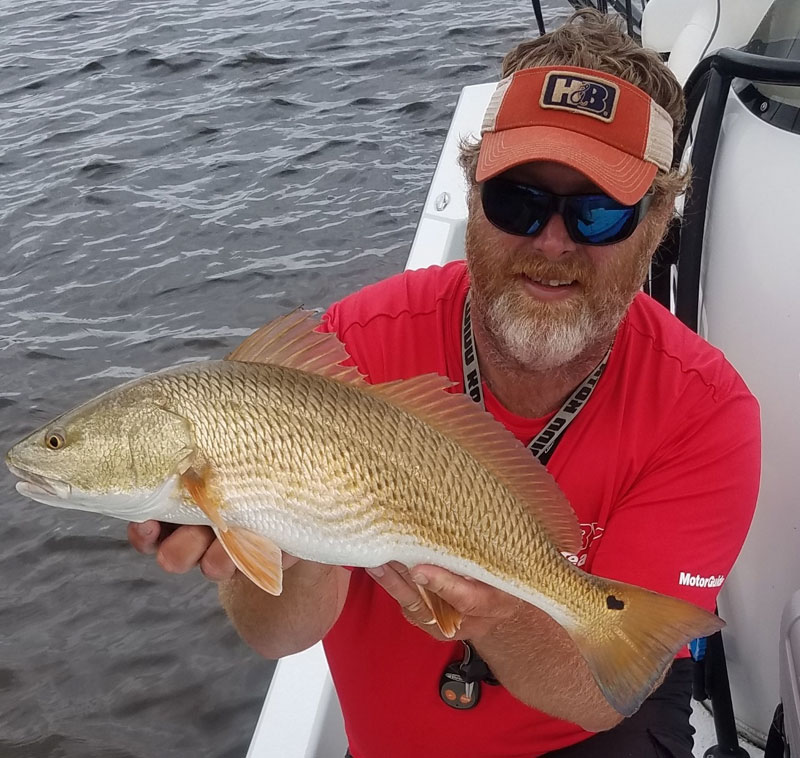
Guide Allen Jernigan shares his June tips for inshore redfish
The peak of North Carolina’s inshore redfish action occurs in June when water temperatures are optimal and bait is plentiful in creeks and bays.
From June through September, redfish also spawn in skinny water, increasing angling opportunities.
Although guide Allen Jernigan of Sneads Ferry, N.C., doesn’t ignore obvious shallow-water redfish signs — tailing on spartina grass flats, dimpling water, fish exploding on or pushing baitfish — he doesn’t worry if he can’t see visible reds or feeding activities.
“When I pull into a marsh, and I can’t see fish because it’s windy or there’s dingy water, I’ll blind-cast where I’ve found schools or single fish,” said Jernigan, who runs Breadman Ventures Guide Service (910-467-1482). “I don’t worry so much about food sources as finding reds.”
As the water warms, marshes and creeks fill with crabs, shrimp and minnows. Although mainly bottom-feeders on fiddler, oyster and mud crabs, grass shrimp, snails and baitfish, redfish are opportunistic and will travel to find food.
“Any bay or marsh can hold reds in June,” Jernigan said. “I also like to fish oyster reefs because reds eat the tiny black crabs.”
If he spots a school, Jernigan, who chases red drum from Topsail Island to the New River and Sneads Ferry areas, uses his trolling motor to maneuver his boat close enough to cast lures to them.
Schools can be finicky
“A big school in June could have 100 fish. But they also may be scattered,” he said.
But schooling redfish are temperamental, depending on past experiences with anglers.
“Sometimes, you can throw a lure into a school, and they won’t scatter if nobody’s pressured them,” he said. “But if you bump ’em with a trolling motor, it’s game over. They’ll disperse and might leave a bay or creek. People who come flying into a creek or bay in a boat make wakes that also will shut down a bite.”
On the other hand, unpressured schools may remain at a favorite, shallow-water smorgasbord for a week or longer.
“Some days, I’ve been able to sight-cast for 3 hours in one bay,” Jernigan said. “Unpressured schools will meander around creeks and bays. The best tactic is to throw past a school and bring a lure across them or cast at its outside edges.”
Jernigan’s tackle includes 2500 and 3000 Series Shimano C14 reels mated to 7- or 7 ½-foot Stillwater rods made by his tournament partner, Jason Dail of Wilmington.
“We use 12-pound braid main line with 20-pound fluorocarbon leaders attached with Albright knots,” he said.
Favorite lures include Top Dogs, SheDogs or TopDog Jrs., Cajun Thunder Flats Intruder spoons and spinnerbaits. Jernigan also uses paddletail grubs on 5-inch, weedless swimbaits and jerkbaits.
“Depending on clients’ skill sets, I also might use popping corks with 4-inch Saltwater Assassin curlytail or paddle-tail grubs,” he said.
“Most June redfish will range from slot sizes (18 to 27 inches long in N.C.) to occasional over-slot,” he said. “From what I’ve seen, I also think 2021 may be one of the better red drum fishing seasons in the last four or five.”
North Carolina’s daily keeper limit is one slot fish per angler per day.



Be the first to comment